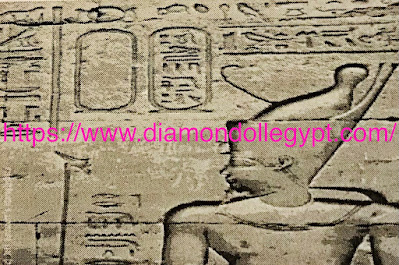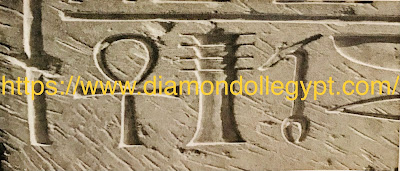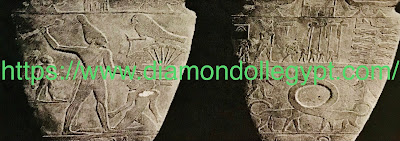Where do we see it ?
What we see engraved on the Egyptian monuments from oval-shaped frames are rectangular and attached from the top with a rope that the ancient Egyptian called
( REN ) in the sense of the name .
The first to call this oval shape the world cartridge is the Pope of the French Vatican
( Jean-Jacques Barthelemy ) in 1751 AD , due to the great similarity between it and the cartridge of hunting rifles .
Likewise , he is the first to say in his research that these figures contain only the names of kings in fact , all that the ancient Egyptians wrote inside theses cartridges are not the names of kings but they are attributes that bind them to the Gods .
As for the person’s name , whether it is a king or an individual that no one knows at all , because the person’s strength , whether it is a god / king / ordinary individual , lies in his name .
If anyone knew the name of the second one , it would be controlled by him and his strength , so the names were very secret that no one would Know .
And the proof of the truth of my words is that the names of the flags are not translated , and if we look at any name from ancient Egypt, whether it is for a god , a king or an individual , we will find that they are ordinary attributes and names that have a translation and not proper names .
Therefore , we did not and will not find proper names at all because the person’s name means his vital strength , so the ancient Egyptian wanted to preserve this strength , making his name a secret thing that no one knows to keep his strength and this strength helps him to resurrect and live again in the other world because the name was one of the basic components of man in the Egyptian Mythology .
The three most important symbols
Often appearing in all manner of Egyptian artwork from amulets to architecture , were the ankh , the djed , and the scepter .
These were frequently combined in inscriptions and often appear on sarcophagi together in a group or separately .
In the case of each of these , the form represents the eternal value of the concept : the ankh represented life ;........ the djed stability;....... and the scepter represented the power.
The Bowl
It is the first Pharaonic historical paintings known as the Naarmer or Narmer as it was written on it . It was written and drawn during the reign of Pharaoh Narmer , who United the two Egyptian faces , and embodied the scene of the unification of the two countries , and the victory of the Pharaonic king over his enemies .
The name of the pharaoh on the board is “ Nara-Murr “ , written with the symbols “ Fish “ and pronounced “ Naaar “ and “ Chisel “ and pronounced “ Murr “ .
This difference in pronunciation of the name , as it is believed that the name has several meanings , and archaeologists have not agreed on the true meaning of the name .
There is at the top of the panel in the first face , we find two sides of a woman who has an ear and two horns of a cow , which is the goddess Mebat , which was named after Hathor and the two sides we find the facade of the palace , “ Al-Sarkh “ and the name of Narmer is engraved inside, and in the picture below we find the pharaoh a large side photographer wearing the crown of Upper Egypt ( Al-Janoubi ) Al-Abiad holds his hand in his hand to hit one of his northern enemies ( which is distinguished by the northern wig ) .
In the second face , we find at the top of the carved image the same faces of the deity that are now between them , the shriek , below which is a scene depicting the end of the war , when the king triumphs and Unites Egypt, the Egyptian Empire begins .



Comments
Post a Comment